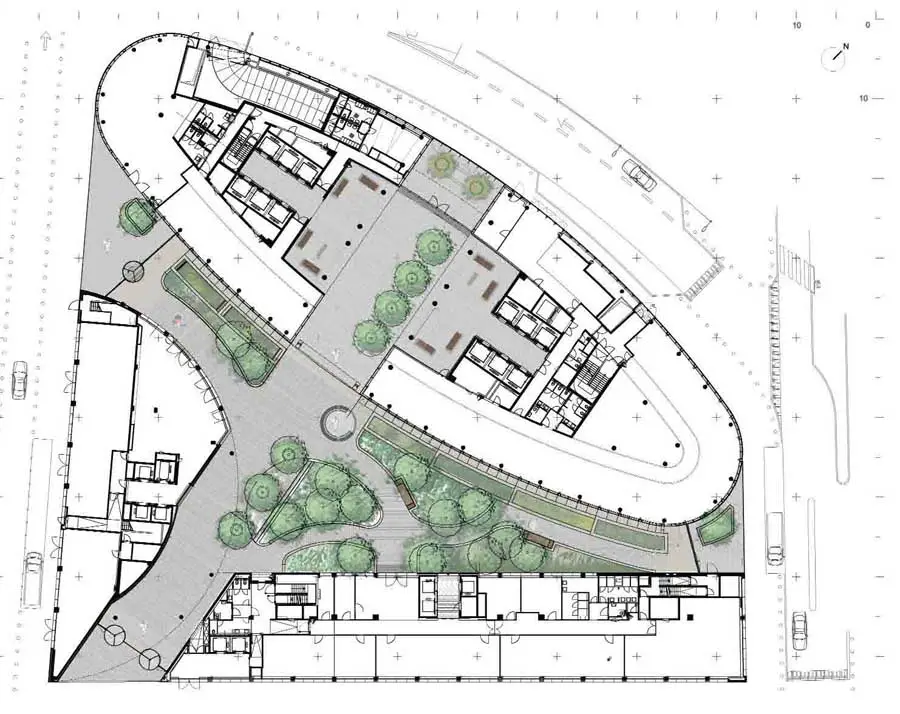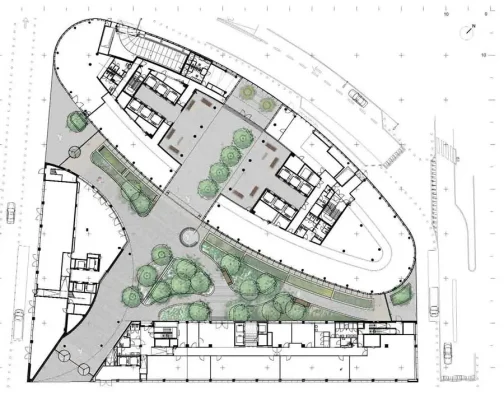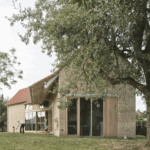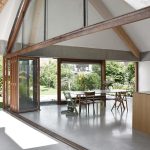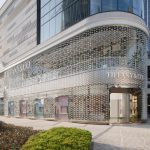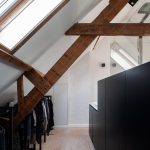Covent Garden Brussels, Retail Building Belgium Images, Architect, Belgian Architecture News
Covent Garden Brussels
Contemporary Belgian Shopping Center design by Art & Build
Retail centre formerly titled Royal Rogier
2008
Art & Build Architect
Belgian Shopping Center
Architecture
17 Sep 2008
Covent Garden Shopping Center
The architecture of the Covent Garden complex will express the way in which the project’s designers – the Art & Build and Montois Partners architectural firms – have wanted to incorporate these various reading scales: City, District, Pedestrian.
It is also the result of a long process during which the project’s designers enjoyed permanent dialogue with the authorities (Municipality, Region, IBGE – Brussels Institute for Management of the Environment, Fire Service, etc) in order to guarantee the integration of the project under optimal conditions. The project is justified in this sense by its good adoption of the urban integration constraints stated at the time of the Incidence Study and for the most part included in the Consultation Committee’s conditions.
The project will in particular preserve its role of urban landmark at the International Rogier Centre Tower from its position at the intersection of historical urban vantage points.
The project was also the subject of a study of the displacement of masses of air in order to guarantee the comfort of pedestrians going round the building on foot and walking in the neighbouring streets and squares.
The Covent Garden Project has moreover been developed in the spirit of guaranteeing maximum flexibility of use, with each building being able to be used separately, and the interior garden being used as a place of exchange and perambulation. All of the office areas can be used as open space or cellular offices.
The Tower
The tall building is an oval-shaped tower, established parallel to the railway. Although the oval shape is blessed with an intrinsic poetic strength, it has proved to be particularly successful in terms of the profitability of the useable surfaces areas.
The height of this building’s acroterion will be 91.96m. The absolute height (including the technical floor) will be 98.90m.
The main volume, oval in shape, will be pierced by a huge atrium going up to the 13th floor, partly external to allow natural ventilation of the premises. The upper parts of the tower will be organised around a patio opening on to the city and a volume in recess.
These various hollows in the basic volume will give it its artistic originality, but will also guarantee optimal lighting of its office areas by increasing the number of offices with a window to the outside world.
A peripheral terrace and two double-height sky lobbies will enable the user to enjoy an exceptional view of the city in general, and of the Botanic Park in particular.
The interplay of the full and empty areas and the overlap reinforce the building’s personality and confer on it, beyond its great height, a human scale. These exceptional aesthetics will enable immediate identification of the building, which will inevitably be associated with its occupant.
The tower’s frontages will be made of non-reflective glass. The vertical modulation will present twofloor intervals marked horizontally by metal stringcourses. This composition will reinforce a horizontal reading of the project, softer in its urban inscription.
Although the offices will be equipped with full-length windows in order to guarantee maximum light, an original device has been developed: a narrow, vertical and opaque element will enable the occupant to open a part of the window to ventilate his or her room naturally and to hear the noises of the city. This is a question of enabling the user to do something naturally – “to open the window” – without obliging him or her to lean out into space above a certain height or to defy the strength of the wind.
The technical floor, recessed from the alignment of the frontages, will be covered by an overlapping metal roof, but this will not exceed the alignment of the tower’s frontage. This roof, which will mark the top of the tower, will receive particular illumination at night in order to reinforce its role of urban landmark.
On the ground floor, on the new roadway side, service rooms will be established: delivery area with a loading/unloading bay, garbage areas, bicycle parking and adjoining sanitary facilities.
Pedestrian access to the tower will follow a traverse that can be seen from Rue Neuve and Place Rogier: an oblique axis, perpendicular to the tower, will penetrate the corner of Rue De Brabant and Rue St Lazare to emerge in the atrium of the building serving various vertical circulations, after having crossed the interior garden (central atrium).
Access from the parking areas will be by a bank of specific lifts, which will emerge on the Rue St Lazare outside the controlled areas.
A shopping area will be established on the ground floor of the tower, on the Rue De Brabant side, on the natural pedestrian concourse between North Station and the city centre.
The Low Building
If the low building wants to be more conventional from the town-planning point of view in terms of its inclusion in the urban fabric, several details give it its own original style.
The white architectural concrete of the frontages will contrast strongly with the tower: at the pedestrian level, this immaculate white mass will be visually preponderant. Its massive side will also be reinforced by the cuttings made here and there, and by the contrast with the dark-coloured joineries.
The white of the frontages will also contribute, from its orientation and the reflection of the light, to a significant increase of the light from Rue St Lazare.
The low building will be composed of two volumes – one on Rue De Brabant and one on Rue St Lazare –, which will overlap at the level of the main entrance to create an architectural event at the corner of Place Rogier.
The volume established on Rue De Brabant closes off Place Rogier and constitutes the corner in symmetry with Rue Du Progrès in relation to the International Rogier Centre. Its size will be aligned with the top of the hotels established on Place Rogier.
A slightly lower volume will be established on Rue St Lazare and Rue Gineste. Its size will be aligned with the acroterion of the buildings located opposite. Its alignment in Rue Saint Lazare will resume the street’s original alignment. It will thus recreate the continuity of the alignment with the International Rogier Centre and Rue Des Croisades. Its installation along Rue Gineste will also recreate the continuity of the built-up frontage.
The overlapping of two low volumes will constitute the complex’s main entrance. An entirely glazed frontage will close this. The diagonal perspective to the foot of the tower will thus be materialised by the vacuum, which will extend further beyond, right up to the railway.
The height of the low building on Rue De Brabant will be 10 levels (R+3), namely 36.43m in relation to Place Rogier. Its height on Rue St Lazare will be 8 levels (R+7), plus a recessed floor, namely 31.27m to the Rue St Lazare acroterion, and 33.07m high in all.
Pedestrians will access the buildings directly from Place Rogier. This entrance will be made visibly apparent by the prolongation of the visual perspective beyond the low building, towards the tower.
On the ground floor, on the Rue De Brabant side, a shopping area will be established.
On Rue St Lazare, the ground floor will enable collective activities to take place (refectory, cafeteria, general-purpose area or other space).
The Covered Garden
The interior garden will be covered by a glass canopy that will connect the buildings. It will distribute people towards the reception areas of each building if the buildings are occupied separately, as well as towards a possible restaurant that could be established at ground floor level.
It is designed as a dense and varied green space and meets the regional legislation in that it represents 10% of the total surface of the built ground.
The canopy covering this garden will enable the growth of numerous species and the realisation of a Mediterranean kind of garden, embellished with leisure areas and ponds that will form part of the wastewater treatment system designed specifically for the project.
Accessibility
The site’s main pedestrian entrance will be located at the crossing of Rue De Brabant and Rue St Lazare, on the corner of Place Rogier. It will be slightly set back from the alignment of the street and will be covered. The adequate lighting of this space that is perfectly visible from Place Rogier place will make it a protected area.
The parking area lifts will emerge to the right of the main entrance, giving access to the complex with shelter from bad weather. Secondary pedestrian accesses are also envisaged on Rue St Lazare and Rue Gineste.
The secondary access on Rue Gineste will also be set back from the alignment of the street. The area between the frontage of the principal atrium and the alignment will be arranged with plantings. A grid of the “urban park” variety will be installed on the limit of the delimited area of this property. This grid will be closed during the evening and at night.
The secondary access on Rue De Brabant will also be set back from the alignment of the street. The installation of the main atrium’s frontage here will make it possible to avoid the creation of a recessed space that would not be visible from the pavement. The recessed area is designed as a possible extension for the shops located at the ground floor of the tower, for a terrace, for example. The delimitation between the public space and the private space will be clearly marked on the ground by a different floor covering and by boundaries.
A buffer space will be preserved between the tower and the railway. Its width of 11.80m at its narrowest point will enable the creation of a two-way public roadway system. Access to the Covent Garden parking areas will be from this roadway. Access to the public carparks is also envisaged via a ramp along the railway. This roadway system will moreover provide access to the tower for the emergency services in accordance with the legislation in force.
Eco-Machine
In a permanent concern for sustainable development and energy saving, the project’s designers have developed the concept of wastewater recovery. Covent Garden will thus be equipped with an installation perfected in the context of the project, and which, in its specific application, is a first in Belgium.
The “Eco-Machine” is a wastewater treatment process using advanced biological and bacteriological purification techniques. This water includes grey water (water from washing) and black water containing faeces.
The objective is to treat this water so that it can be recycled into the building’s consumption cycle. Water is recovered at the end of the process and is stored in a pond of undrinkable water. It is reinjected into the building for a sanitary use (WC), for the maintenance of the building and for watering the plantings.
The system proceeds initially by sedimentation in a septic tank and biological purification with nitrification: the bacteria are held in free suspension in the water and the biomass is filtered through membranes.
In a second stage, the water will transit via by the covered garden into vats with helophytes, which play a fine purification role. When entering the atrium, the water will comply with the minima criteria required for safety and hygiene.
Covent Garden Shopping Center Brussels images / information from Art & Build Architect
Covent Garden Brussels : main page on this Belgian shopping center
Location: Covent Garden, Brussels, Belgium, western Europe
Architecture in Belgium
Architectural Tours – city walks
Belgian Architecture

picture from ZHA
Covent Garden : London
Comments / photos for the Covent Garden Brussels Belgium Building design by Art & Build page welcome

